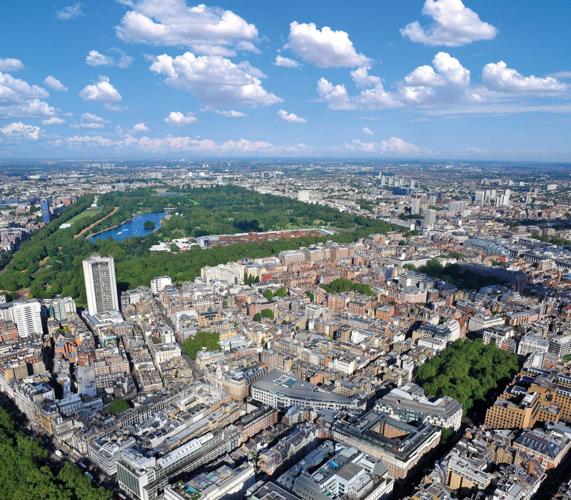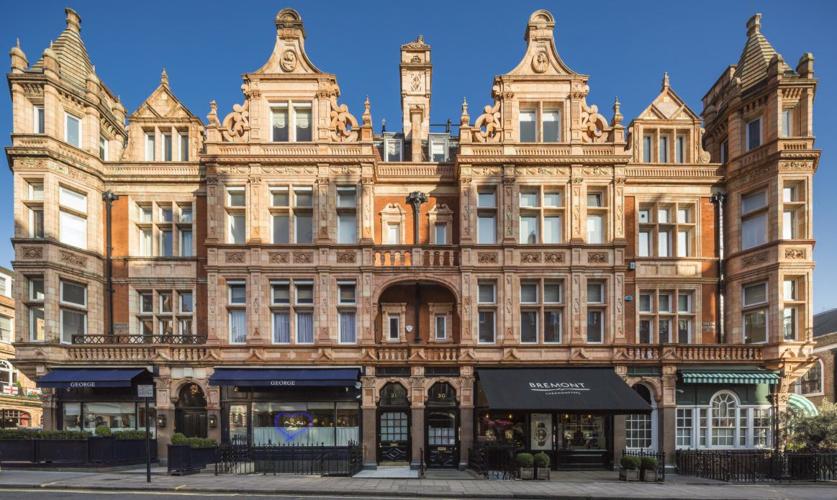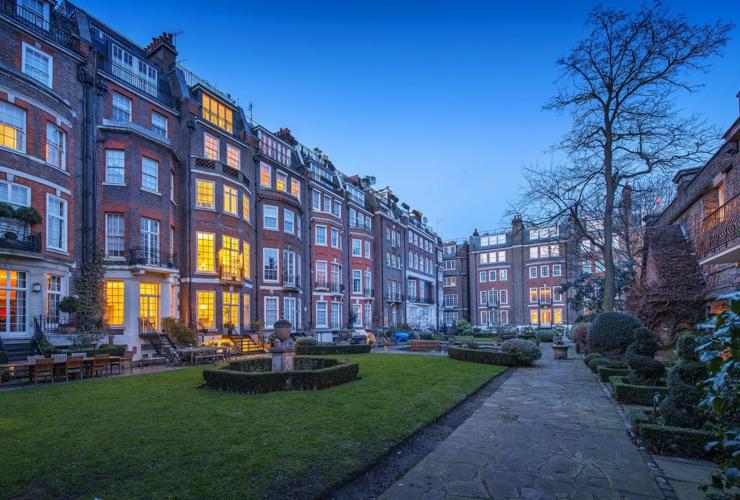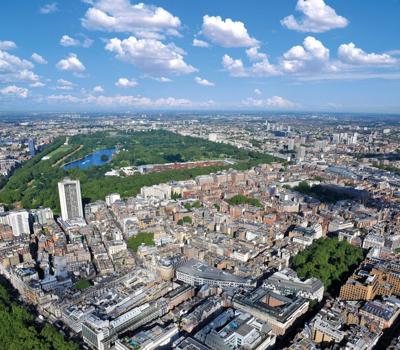Long known as an affluent area of London’s West End, Mayfair is thought of with equal parts intrigue and envy among some residents throughout the city. Surrounded by Oxford and Regent Streets and Park Lane, this location has a colorful history dating back to 1686. Mayfair was named after the May Fair – an event spanning a fortnight held every year in the neighborhood. Since that time, addresses in Mayfair have been deemed exclusive, with an old saying that those who control the world live in the area. While Mayfair’s residential makeup has changed over the years, it remains an urban oasis for a varied demographic.
Historic Makeup of Mayfair

According to a Mayfair estate agent, the neighborhood has had its fill of famous and influential residents over the years. The most well-known is HRH Queen Elizabeth II, born at 21 Bruton Street, but others including Winston Churchill, on Down Street, and composer George Frideric Handel, on Brook Street, also made up the historic affluence of the area.
Reported in the 1790 Census of households, Mayfair included 129 persons of title, 35 members of Parliament, and 112 professionals, representing just 18 percent of the population. Trade workers made up the majority of Mayfair at 60 percent, but the power of the neighborhood remained in the hands of the affluent. Over the last few centuries, Mayfair has grown into a burgeoning location for those who want a prestigious address, but there has also been an influx of younger professionals in the area who are seeking out a high quality of life.
Attracting a Younger Crowd

A recent survey by Experian highlights the transition of Mayfair over the last several years, with statistics showing a modern neighborhood that is attracting affluent wealth and younger buyers. Currently, Mayfair’s population is comprised of more than 70 percent of wealthy individuals, compared to the seven percent throughout the rest of London. Among those living in Mayfair today, both Generation Z and Millennials – those born between 1995 and 1980 – are drawn to the location for myriad reasons.
Generation Z residents, typically characterized by tech-savvy entrepreneurs with an eye for the exclusive, as moving to Mayfair to rent smart homes that aid in their overall lifestyle. It is predicted that by 2028, 30 percent of Mayfair residents will fall within this generation. Similarly, Millennials, who make up 35 percent of Mayfair’s current population, are focused on their high-powered careers and want a neighborhood to match their active and coveted lifestyles. Mayfair offers something for each of the younger generations, thanks in part to its livability scores.
A Focus on Livability and Lifestyle

Some interesting statics have come out of Mayfair in the last year, with most focused on the livability factors drawing younger generations into the area. Currently, an estimated 27 percent of residents are managers, directors, and senior officials in London and elsewhere. It is also noted that 45 percent of residents are employed in the financial, real estate, or professional services genres. This lends to the exclusivity of the neighborhood, and it has prompted the area to rise to the challenge of meeting the needs of its affluent residents.
Whether young or old, those who live in Mayfair want a quality of life not found in other areas of London, along with luxury and experiential living at every turn. The location is less than one mile away from the West End Theatreland, but within the neighborhood, Mayfair residents have access to nearly everything they want or need. An impressive 28 percent of London’s Michelin starred restaurants are in Mayfair, and the ratio of people to restaurants is 31 to one. More than 22 percent of residents walk to work, and 60 percent spend at least two and a half hours doing some form of physical activity each week. These statistics showcase who lives in Mayfair and its focus on providing a high lifestyle standard for residents.
Over the next several years, it is expected that the trend of younger residents will continue in Mayfair, but older households will remain a staple of the community. The growth of the number of residents over 55 is anticipated to increase by 15 percent in the next decade, making Mayfair an attractive place for those in or near retirement as well. Overall, prestigious people continue to inhabit the affluent neighborhood of Mayfair, and there is no prediction that this will change regardless of the increasing number of younger residents in the upcoming years.








(0) comments
Welcome to the discussion.
Log In
Keep it Clean. Please avoid obscene, vulgar, lewd, racist or sexually-oriented language.
PLEASE TURN OFF YOUR CAPS LOCK.
Don't Threaten. Threats of harming another person will not be tolerated.
Be Truthful. Don't knowingly lie about anyone or anything.
Be Nice. No racism, sexism or any sort of -ism that is degrading to another person.
Be Proactive. Use the 'Report' link on each comment to let us know of abusive posts.
Share with Us. We'd love to hear eyewitness accounts, the history behind an article.